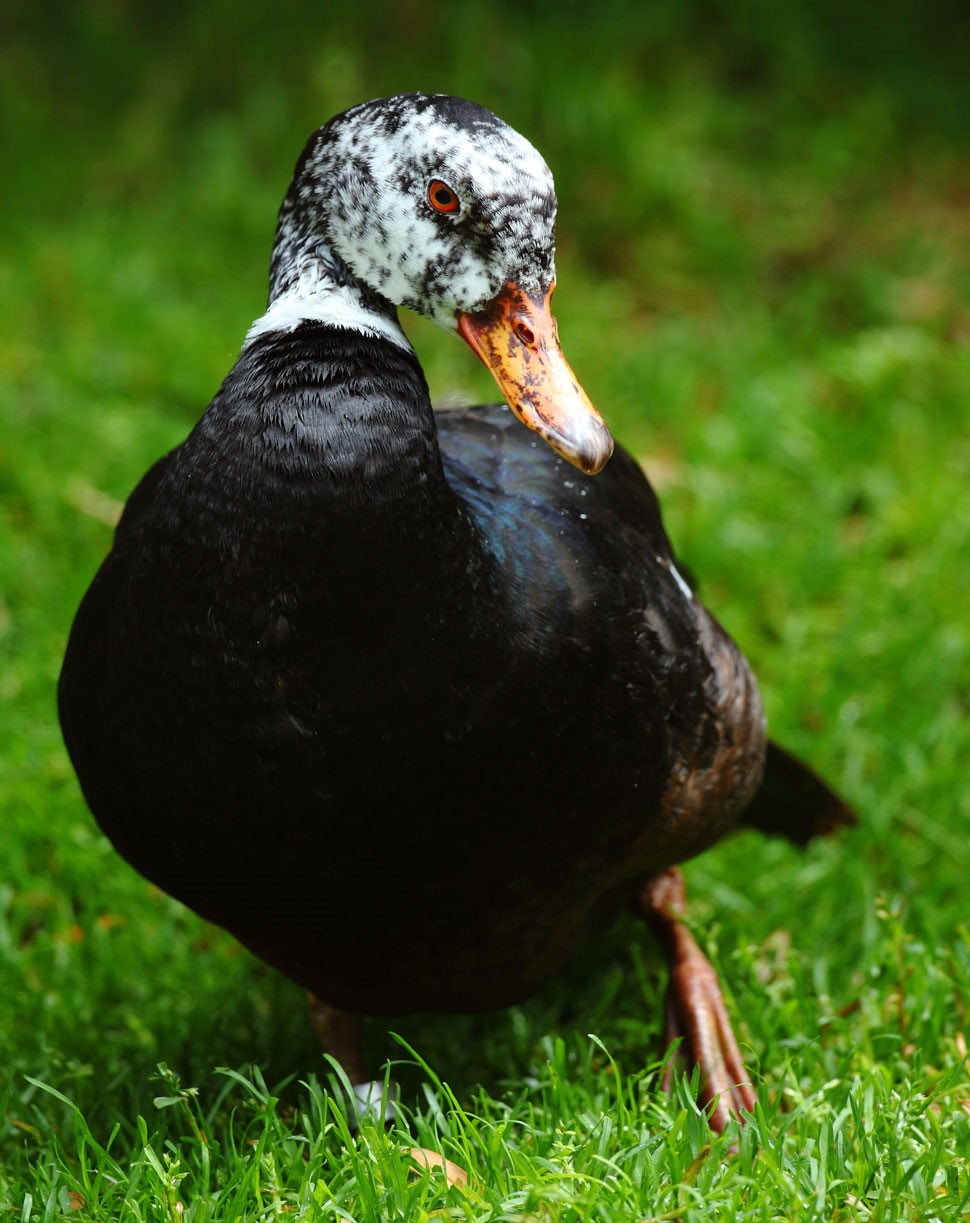White-winged wood duck
Asarcornis Scutulata
IUCN Status: Endangered

Diet
Seeds, aquatic plants, grain, rice, snails, small fish and insects – a true omnivore!
Breeding
A tree hole nesting species, laying up to 16 eggs!
At The Zoo
We have a trio (one drake & two hens) on exhibit with our whistling ducks. They are proving to be tremendously difficult to breed and each year we try stimulating breeding in different ways! No success yet!
Habitat
Stagnant and slow flowing natural wetlands around dense evergreen forests within which it nests and roosts. There are scattered small populations throughout South-east Asia.
Fun Facts
This is one of the biggest ducks in the world. Only the steamer ducks of the Andes are heavier! Although it looks a bit like a wild Muscovy duck this is “convergent” evolution as Muscovy’s occur in South America. These are more closely related to diving ducks. A flightless period of two weeks happens every year in Autumn when this bird disappears into dense rainforest and hides!
Behaviour
A truly secretive species that in the wild only feeds at night.

